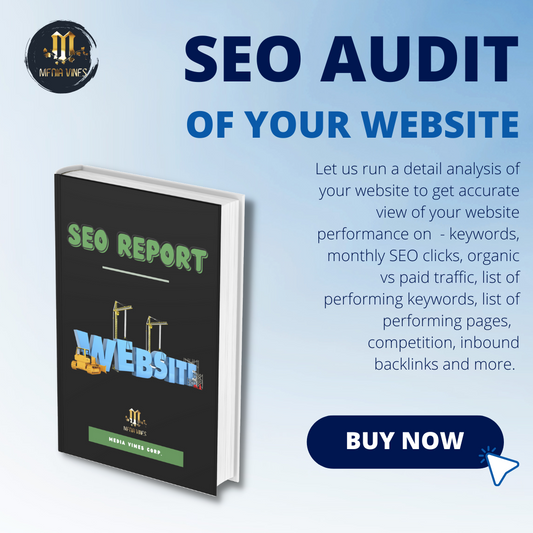Introduction
SEO has been an essential aspect of digital marketing for many years. It involves optimizing websites and online content to rank higher in search engine results pages (SERPs) for specific keywords and phrases. While SEO practices have evolved over time, the emergence of advanced machine learning models such as Chat GPT has brought more awareness to the impact of AI and machine learning on SEO. Google's latest algorithm, the AI algorithm or RankBrain, uses artificial intelligence to determine the most relevant search results for a given query. It considers numerous ranking factors, including user engagement metrics, and natural language processing to understand the context of the search query. The AI algorithm continuously learns from users' search patterns, allowing it to adapt and deliver more accurate search results over time. In this blog, we will explore the latest strategies for optimizing SEO for the Google AI algorithm.
Understanding Google AI Algorithm
Google AI Algorithm, also known as RankBrain, is an advanced machine learning system that uses artificial intelligence to determine the most relevant search results for a given query. RankBrain was first introduced in 2015 and has since become an increasingly important ranking factor for Google's search engine. Unlike traditional SEO algorithms, RankBrain considers numerous ranking factors, including click-through rate, bounce rate, time spent on a page, and other user engagement metrics. It also considers the user's search intent, using natural language processing to understand the context of the search query.
In the past, traditional SEO practices often involved keyword stuffing and creating single keyword pages to manipulate search engine rankings. However, these tactics are now considered outdated and ineffective for optimizing SEO for the Google AI algorithm. The AI algorithm places greater emphasis on delivering high-quality, relevant content to users, rather than just matching keywords and phrases. Additionally, on-page SEO factors such as meta descriptions and header tags are still important, but they're no longer the sole focus of optimization efforts. To rank well in the search results, businesses now need to focus on providing high-quality, engaging content that aligns with the user's search intent, as well as optimizing for user engagement metrics such as bounce rate and time on site. By doing so, they can improve their website's overall performance and ensure it ranks well in the Google AI algorithm.
In summary, the Google AI algorithm has revolutionized the way we think about SEO by taking into account more than just basic ranking factors such as keywords and links. Instead, it places a greater emphasis on user engagement metrics and natural language processing to better understand the user's search intent. As a result, it's become increasingly important for businesses to optimize their websites and online content for the Google AI algorithm to ensure they rank well in the search results.
SEO Strategies for Google AI Algorithm
Content Optimization
To optimize SEO for Google AI algorithm, content optimization is a critical factor. Content should be designed to cater to user intent, and keyword stuffing should be avoided. To ensure that the content is optimized for the AI algorithm, natural language processing must be utilized. This involves using keywords and phrases in a way that sounds natural to the reader, not merely repeating them.
User search intent, also known as search query intent or simply search intent, refers to the underlying purpose or motivation behind a user's search query. By understanding the different types of user search intents, businesses can better optimize their websites and online content to meet the needs of their target audience. Here are the four main types of user search intent:
-
Informational Intent: This is the most common type of search intent, and refers to when a user is looking for information on a specific topic. The user may be looking for answers to a question, or seeking to learn more about a particular subject.
-
Navigational Intent: This type of search intent occurs when a user is looking for a specific website or webpage. They may enter the name of the website directly into the search engine, or type in a specific URL or brand name.
-
Commercial Intent: This type of search intent occurs when a user is looking to make a purchase or take a specific action, such as filling out a form or subscribing to a newsletter. Users with commercial intent often search for specific products or services, and may include keywords like "buy," "discount," or "best price."
-
Transactional Intent: This is the most specific type of search intent, and occurs when a user is ready to make a purchase or complete a specific action, such as booking a hotel room or buying a concert ticket. Users with transactional intent often include specific details about what they're looking for in their search query, such as brand names or product specifications.
By understanding the different types of user search intents, businesses can tailor their website content and optimization strategies to better meet the needs of their target audience, improve their overall website performance, and drive more relevant traffic to their website.
Website performance
Website performance is also an essential factor for the Google AI algorithm. User engagement metrics such as bounce rate, time on site, and click-through rate play a crucial role in determining the relevance of a website. Structured data and schema markup can be used to provide additional information to the algorithm about the content on the page. Finally, mobile optimization is critical for SEO in the age of AI as more users search for content on mobile devices.
User Engagement
User engagement refers to the extent to which users interact with and are interested in a website or online content. User engagement metrics are an important factor in determining a website's overall performance and ranking in search engine results pages (SERPs). Here are some common user engagement metrics:
-
Bounce Rate: The percentage of users who visit a website and leave without interacting with any other pages on the site. A high bounce rate can indicate that the website content is not relevant or engaging to users.
-
Time on Site: The amount of time a user spends on a website before leaving. A longer time on site can indicate that the website content is engaging and relevant to users.
-
Pages per Session: The average number of pages a user visits during a single session on a website. A higher pages per session can indicate that the website content is interesting and relevant to users.
-
Click-Through Rate (CTR): The percentage of users who click on a link to a website from a search engine results page or advertisement. A higher CTR can indicate that the website content is relevant to the user's search query and meets their needs.
-
Social Shares: The number of times website content is shared on social media platforms such as Facebook, Twitter, and LinkedIn. A higher number of social shares can indicate that the website content is interesting and valuable to users.
By optimizing for user engagement metrics, businesses can improve their website's overall performance and ranking in SERPs. They can do this by creating high-quality, engaging content that aligns with the user's search intent, providing easy navigation and user-friendly design, and incorporating multimedia elements such as images and videos to enhance user experience. Additionally, businesses can encourage social sharing and use other promotional tactics to increase user engagement and drive more relevant traffic to their website.
Structured data and schema markup
Structured data and schema markup are powerful tools that can help businesses improve their website's search engine optimization (SEO) and overall performance. Here's a closer look at what they are and how they work:
Structured Data: Structured data is a type of data that is organized and formatted in a way that search engines can easily understand and interpret. This type of data includes things like product descriptions, reviews, ratings, and other types of rich snippets. By using structured data, businesses can help search engines understand their website content better and display more relevant search results for users.
Schema Markup: Schema markup is a specific type of structured data that uses a standardized format to describe the content on a website. It uses a set of code or tags that can be added to the HTML of a website, which helps search engines understand the content on the page more effectively. Schema markup can help businesses enhance their website's appearance in search engine results pages (SERPs) by providing more detailed information about their website content.
By implementing structured data and schema markup, businesses can provide more accurate and detailed information about their website content to search engines. This, in turn, can lead to improved visibility in search results, enhanced click-through rates, and ultimately more relevant traffic to their website. For example, if a business uses structured data to provide detailed information about a specific product, such as its price, availability, and customer reviews, users are more likely to click on the search result and make a purchase.
There are many different types of schema markup, including local business schema, recipe schema, and event schema. By using schema markup, businesses can provide more relevant and specific information about their website content to search engines, which can help improve their overall SEO performance and drive more relevant traffic to their website.
Mobile Optimization
Mobile optimization is a critical aspect of search engine optimization (SEO) and user experience. With the rise of mobile devices, more and more users are accessing websites and online content through their smartphones and tablets. Here are some key strategies for optimizing your website for mobile devices:
-
Responsive Design: One of the most important aspects of mobile optimization is having a responsive design. This means that your website should be designed to adapt to the screen size of the user's device. A responsive design ensures that your website is easy to use and navigate on any device, whether it's a desktop computer, tablet, or smartphone.
-
Mobile-Friendly Content: Another important aspect of mobile optimization is ensuring that your content is mobile-friendly. This means that your content should be optimized for smaller screens and easy to read on a mobile device. You can achieve this by using shorter paragraphs, larger fonts, and incorporating multimedia elements such as images and videos.
-
Fast Page Load Speed: Mobile users are often on-the-go and want to access information quickly. Therefore, it's important to ensure that your website loads quickly on mobile devices. This can be achieved by optimizing your images, minimizing the use of plugins and scripts, and using a content delivery network (CDN) to speed up page load times.
-
Mobile-Optimized Navigation: Navigation is a critical component of user experience, especially on mobile devices. It's important to ensure that your website's navigation is easy to use and navigate on a small screen. This can be achieved by using a hamburger menu, a drop-down menu, or a simplified menu design.
-
Mobile-Specific SEO: Mobile-specific SEO strategies include optimizing for local search, using mobile-specific keywords, and incorporating mobile-friendly content. By optimizing for mobile-specific SEO, you can increase your website's visibility in mobile search results and drive more relevant traffic to your site.
By optimizing your website for mobile devices, you can improve user experience and increase your website's visibility and ranking in search engine results pages. With more and more users accessing websites through mobile devices, mobile optimization is critical to the success of your website and business.
Best Practices for SEO in Google AI Algorithm
To optimize SEO for Google AI algorithm, the following best practices must be followed:
Focus on E-A-T (Expertise, Authoritativeness, Trustworthiness): The algorithm considers the authority of the website and the expertise of the author. Creating quality content from reputable sources will boost the website's authority and increase trustworthiness, making it more likely to rank highly in the SERPs.
Develop a strong backlink profile: The quality of backlinks to a website is an essential factor for the Google AI algorithm. Focus on building high-quality links from reputable sources to boost the website's authority.
Regularly update and refresh content: Regularly updating content on a website is a vital SEO strategy for the Google AI algorithm. Websites that update their content regularly are considered more relevant by the algorithm.
Monitor and analyze performance data: Monitoring and analyzing performance data regularly can help identify areas for improvement in the website's SEO strategy. Regular performance analysis can provide valuable insights into user behavior and the effectiveness of the website's optimization strategies.
Closing
In conclusion, optimizing SEO for the Google AI algorithm requires a multi-faceted approach that focuses on content, website performance, user engagement, and structured data. With the rapid advancement of AI technology, it is essential to keep up with the latest SEO practices to remain competitive in the digital space. By following the best practices outlined above, website owners can improve their website's rankings in the SERPs and increase their visibility to potential customers. While the implications of AI on SEO are still unfolding, one thing is clear – SEO strategies must evolve to keep pace with the advancements in technology.





